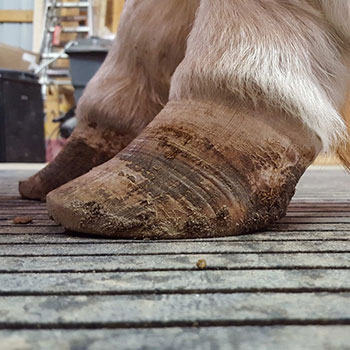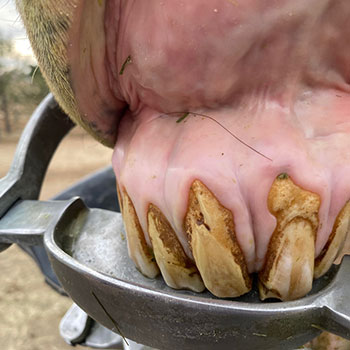Below please find articles we think you may find useful! For any questions, please call our office and we are delighted to assist!

Preventing Disease Spread: Don't Forget About Farriers
Most horse owners are familiar with practical ways to reduce the risk of equine contagious diseases such as vaccination and avoiding contact with sick horses. However, diseases can be spread by many routes including insects, contact with contaminated surfaces, aerosols or droplets from saliva or nasal secretions of a horse with respiratory disease, and ingestion of fecal material from a horse with intestinal disease. People can become contaminated by these bacteria and viruses too, most often on skin, clothing, footwear and equipment. The person could then unwittingly carry the organism to other horses, not just within a barn but to other barns as well.

Everything You Ever Wanted to Know About Equine Dentistry
It is common these days for horses to live into their thirties and beyond. Their teeth, however, were really only developed to last into their twenties under optimum conditions. Unfortunately, the majority of our domestic horses do not live under those optimum natural conditions in which they evolved. Everything we, as equine veterinarians, can do to prevent the premature attrition of the horse’s teeth will stand them in better stead to live better, longer lives.
Can farriery resolve the negative palmar angle?
The equine hoof can be divided into dorsal and palmar/plantar sections. The deformable soft tissue structures located within the palmar/ plantar section of the hoof capsule are the frog, frog corium, digital cushion, ungual cartilages and the deep digital flexor tendon. The function of these structures is to absorb concussion, dissipate the energy of impact and decrease the vibrations associated with the foot landing on the ground.
Sheared heels and the correlation to spontaneous quarter cracks
The strong association between sheared heels and a spontaneous quarter crack is hard to ignore. Although inappropriate farriery may play a role, limb conformation and the landing pattern of the horse appear to be the dominant factors causing this type of hoof capsule deformation.
